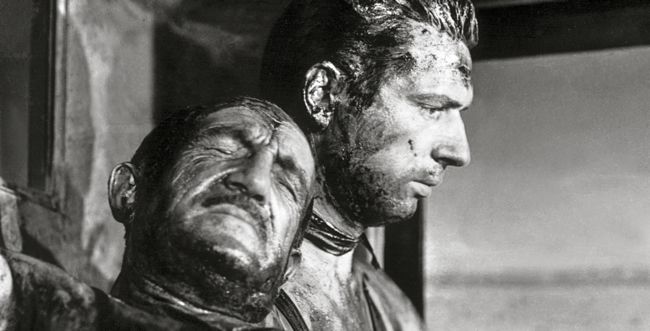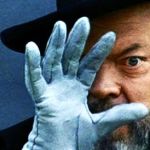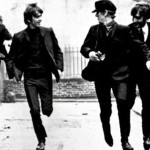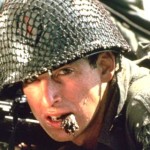
Henri-Georges Clouzot was a man ahead of his time. With “The Wages of Fear” the French director anticipated the golden age of over-amped, over-budget action films by three or four decades.
In 1951, Clouzot abandoned the comfy soundstages of Paris, marching his cast and crew into the rocky hills of southern France. There, his craftsmen built a poverty-infested Latin American village and an oil-drilling outpost as the grim settings for “Fear.”
When Clouzot called “action,” he wasn’t kidding: The crew dynamited boulders, rolled trucks off a cliff, risked their lives driving atop a decrepit bridge, rode horses into a gasoline fireball and endured the fits of rage for which their director was notorious.
“It was an army operation,” his assistant director recalls. “It wasn’t just a filming.” Production dragged out over two years because of a flood that swept away the sets and funding that ran dry.
Clouzot and company were rewarded with a rue-buster, a hit that dominated the French boxoffice for several years. In Cannes, the film took the Palme d’Or.
Things turned ugly in the States, though, because of the movie’s perceived anti-American tone. Time magazine called “Fear” one of the “most evil” movies ever made. Variety warned of the “commie presence” of star Yves Montand. The American distributor, DCA, proceeded to hack out 20 minutes of a film in which pacing and momentum were everything.
Still, film buffs had no problem locking into the tale of four expatriate losers who seek salvation by trucking crates of unstable nitroglycerin across 300 miles of Venezuelan badlands. “Dangerous work. Good pay,” the U.S. oil company promised, desperate to blow out a towering fire at its money well. Two trucks roll out for the suicide mission, their drivers cold-sweating every bump, every fateful turn of the wheels. Montand plays the die-hard everyman, the audience’s last futile hope for a Hollywood ending.
Even with the distributor’s cuts, the film became known worldwide as a classic of throat-tightening suspense. “Fear” influenced generations of hell-bent directors such as Sam Peckinpah, who stole its opening scene of a boy torturing cockroaches for “The Wild Bunch.” In 1977, William Friedkin remade “Fear” as “Sorcerer,” his gritty follow-up to “The Exorcist.” He dedicated the film to Clouzot. (Universal rereleased “Sorcerer” a few years back; it’s well worth a spin, despite the raggedy video.)
Clouzot went on to cement his reputation as “the French Hitchcock” with the masterful “Diabolique,” released in 1955. (“Fear” and “Diabolique” make a mind-bending double feature for those who can handle all that tension and nihilism.)
“Fear” finally was restored to its original 147 minutes in the early 1990s. The Criterion Collection released the director’s cut on laserdisc, and again on a bare-bones DVD in 1999.
Now Criterion’s back in the driver’s seat with a double-disc edition worthy of the film (retail $39.95). The set boasts significantly upgraded audio/video and a bonus disc that tells the story of this remarkable film and its troubled director.
(Update: Criterion released “Wages of Fear” on Blu-ray in 2009.)
Clouzot once said of his visual style, “I always aim to accentuate the chiaroscuro, to oppose light and shadow.” The restored images amplify Clouzot’s artistry, delivering dramatic contrasts and little grain. A fine-grain master was the source for the high-definition transfer. The black-and-white video (1.33:1, as shot) is pretty much free of age-related wear. The audio also got a makeover. It’s parked in the center speaker, but for fuller sound, ditch the surround mode.
The main extra is the Clouzot documentary “The Enlightened Tyrant,” made in 2004 for French TV. The disc also includes candid interviews with assistant director Michel Romanoff and Clouzot biographer Marc Godin. Montand talks about his film career and working with Clouzot in a puff piece taped in 1988, a few years before the singer-actor’s death. There is no commentary track, unfortunately, but the well-written booklet fills in some gaps.
The DVD’s portrait of Clouzot throws some light on “the extreme blackness” of his films. Beginning at age 27, the director spent four years in a sanitarium suffering from tuberculosis. He worked in the French film industry during the occupation. In 1944, he was found guilty of collaboration and banned from directing for two years, apparently a bum rap.
“Life is horrible,” Clouzot once told his young star Brigitte Bardot.
“I think he was deeply pessimistic, which is a nice way of putting it,” biographer Godin says.
When frustrated, the director bullied actors and slapped around actresses. “A set needs drama,” he explained. Bardot says Clouzot once drugged her to get the performance he wanted.
“He needed to have a bit of a crush on his female stars,” says Cecile Aubry, one of his stars. “At the same time, he liked to break them.” Clouzot’s wife, Vera, provided the sex appeal in the otherwise testosterone-soaked “The Wages of Fear” and later co-starred in “Diabolique.” When the actress died in 1960, Clouzot was accused of working her to death. He mourned Vera for the rest of his life.
Another bonus section uses deleted (now restored) scenes to make the case that the distributor cut the film for political and social reasons. A couple of key missing scenes attacked American imperialism by showing how the oil company valued crude over human life. Another cut scene amplified the suggested homosexuality in the drivers’ evolving relationships. And the removal of Clouzot’s penultimate punch line — a character dies seeing “Nothing, nothing” in the afterlife — eased the existential despair at the heart of the tale.



Leave a Reply